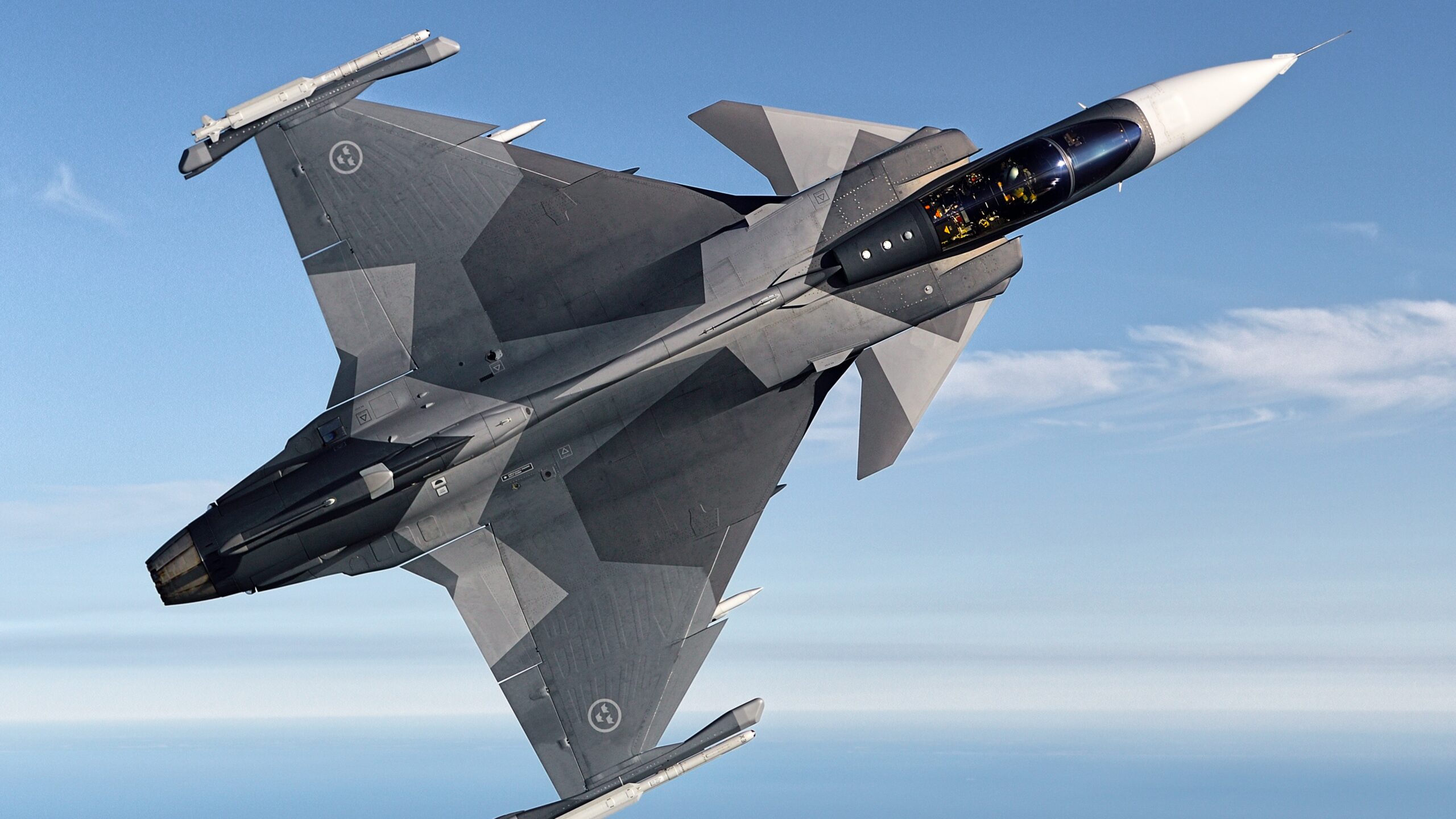
BELFAST — The newly published Swedish armed forces annual report 2022 has laid out a number of operational and industrial difficulties facing the Scandinavian nation, which include supply chain shortages and a pilot crisis causing Gripen fighter jet flight hours to fall by nearly 12 percent compared to 2021.
Across 2022, the war in Ukraine and supplier shortages led directly to struggles with maintenance of military equipment and “major delivery deviations” arising, such as delay to the new signals intelligence vessel HSwMS Artemis, according to the report.
“Extensive measures have been taken in connection with special government decisions with financial additions…as well as in connection with the allocation of funds for the re-acquisition [replacement] of equipment covered by the aid to Ukraine….however, the war in Ukraine and other production conditions such as component and raw material shortages play a role adversely affecting materiel [supply] and production,” the document, published Feb. 22, stated.
A pilot shortage led to the Swedish Air Force recording 1,363 fewer flight hours in 2022 for its Gripen force, against 11,727 hours covered in 2021. That raises serious questions about Swedish air power at a time when, as the report suggests, “Russian action constitutes a breaking point for Swedish and European security and rules-based security.”
A shortage of air combat leaders, flight technicians and pilots are specifically identified as the sources of the problem, alongside 30 pilots taking study leave.
“In 2022, the furloughs have not affected the execution of main tasks to any significant extent, however, the air force’s ability to continue to train and maintain combat units has declined significantly,” added the report. “If the leave of absence continues over time, the ability of the military units will also decline, primarily with regard to the ability to solve main tasks but also with regard to endurance.”
More promisingly, the continued supply of Gripen replacement units and spare parts, review of agreements with suppliers and construction of a new workshop on the F-17 Air Force Wing are all said to be supporting “planned needs” out to 2025.
Saab received a SEK500 million ($48 million) contract in December 2022 to upgrade the Swedish Air Force’s Gripen C/D fleet so it can stay in service until 2035. Stockholm has also agreed to acquire 60 of the more advanced Gripen E jets.
Other Sources Of Concern
The Gripen is not the only air asset with concerns. A lower availability of Sweden’s Transportflyg Tp 84 (C-130 Hercules transport aircraft) in 2022 was caused by the aircraft remaining with Lockheed Martin “longer than planned,” according to the armed forces report.
Similarly, a lack of technical personnel led availability of the helikopter 15 fleet (the military variant of the Agusta A109) to be “negatively” impacted.
A reference to “downward” availability is also made regarding helikopter 14E, the ground operations version of Sweden’s NH90 aircraft, a program that was cancelled in November 2022 and which will also see naval versions (helikopter 14F) of the rotorcraft replaced.
A number of ‘ongoing renovations’ and repairs have forced Swedish Army tanks and combat vehicles to also suffer lower availability rates.
Despite such a finding, the report mentions that the acquisition and entry to service of new land vehicles means that “opportunities to build operational capacity” in the future are set to increase.
Land based capabilities were notably enhanced in 2022 with Sweden receiving four Patriot surface-to-air (SAM) systems, according to Local, a Swedish news website. The annual report refers to delivery of three units only. Refurbished CV90 armored combat vehicles and Leopard 2A5 main battle tanks (tank 122 in Swedish service) continued throughout the year, noted the doicument.
Naval modernisation also saw completion of midlife upgrades for two corvettes — HMS27 Sundsvall and HMS Gävle.
Export Oppurtuntites
Attempts to secure export contracts for Swedish designed military equipment were reduced in “scope” last year because of the war in Ukraine, but support by the armed forces was provided to Gripen campaigns focused on new business with the Czech Republic, Hungary and Thailand. The aircraft lost out in March 2022 to Lockheed Martin’s F-35A fifth generation fighter under Canada’s $19 billion Canadian ($15 billion US) Future Fighter Capability Project.
Export support was also provided for the Netherlands Walrus-class submarine replacement effort. As Breaking Defense previously reported, Saab Kockums, Naval Group and ThyssenKrupp Marine Systems are due to submit their proposals in summer 2023 following release of a request for quotation by the Netherlands Ministry of Defence in 2022.
“During the first quarter [of 2022], the Swedish Armed Forces completed export support to BAE Bofors regarding Archer [155mm self-propelled howitzer] within the framework of testing and evaluation in the USA,” added the report.
“The head of the [Swedish] army, the head of the navy and the head of the air force have participated in numerous trips, visits and video conferences linked to export support in 2022.”

